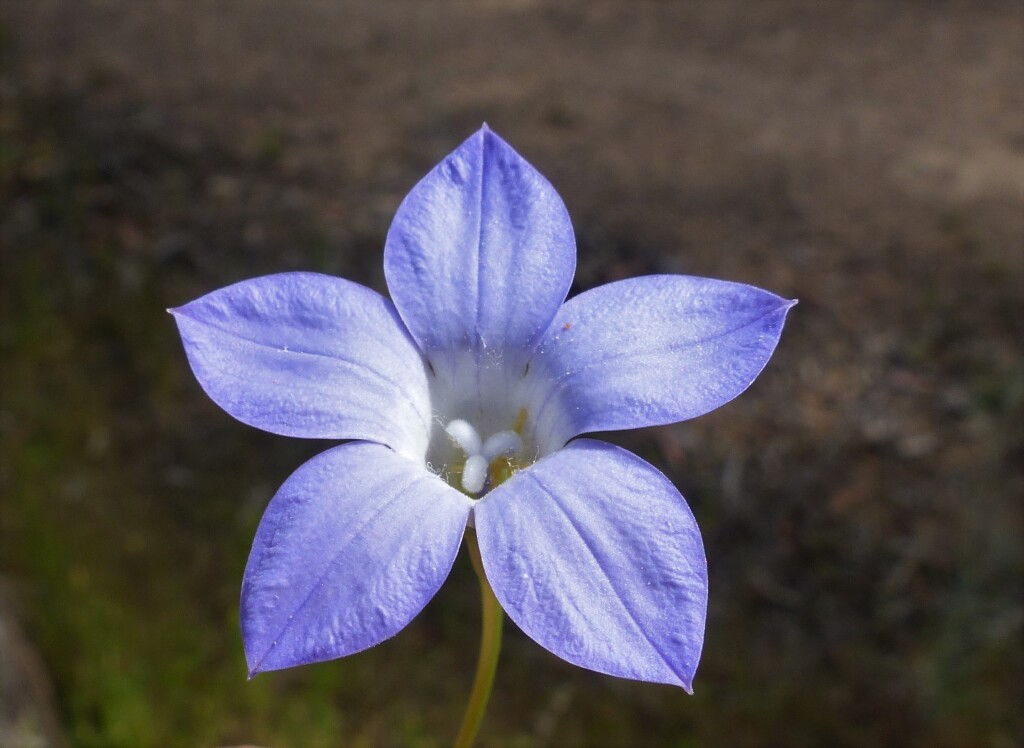Wahlenbergia stricta subsp. stricta
Tall BluebellPerennial with thickened taproot; stems few-many (sometimes single) from base, usually few-branched (sometimes many-branched or simple), usually hirsute at least in lower part, rarely quite glabrous, erect or sprawling, to 45(–90) cm high, often leafless in upper half; leaves opposite throughout or alternate in upper part, obovate to ovate or narrowly so, sometimes linear near inflorescence, 5–70 mm long, 1–13 mm wide; margins usually undulate or crenate, usually with small callus-teeth. Hypanthium barrel-shaped to obconical, 2–4 mm long, glabrous or sparsely hirsute; calyx-lobes erect or weakly spreading, narrow-triangular, 3–8.5 mm long, glabrous or sparsely hirsute; corolla campanulate, blue to deep mauve, often whitish (rarely yellowish) outside, tube 4–11 mm long, shorter or longer than calyx-lobes, lobes elliptic to ovate, 6–20 mm long, 2.5–12 mm wide, acute; style 5.5–13 mm long, not or hardly constricted, lobes 3, oblong. Capsule barrel-shaped, obovoid or globoid, 3–10 mm long, 2.5–8 mm wide. Flowers mostly Oct.–Jan.
LoM, MuM, Wim, GleP, VVP, VRiv, MuF, GipP, OtP, WaP, Gold, CVU, GGr, DunT, NIS, EGL, EGU, WPro, HSF, HNF, OtR, Strz, MonT, HFE, VAlp. WA, SA, Qld, NSW, ACT, Tas. Except for the mallee and heavier soils of the Wimmera, Riverina and Volcanic Plain, widespread and fairly abundant across the State, from sea-level to the alps.
Walsh, N.G. (1999). Wahlenbergia. In: Walsh, N.G.; Entwisle, T.J., Flora of Victoria Vol. 4, Cornaceae to Asteraceae, pp. 554–563. Inkata Press, Melbourne.
 Spinning
Spinning


